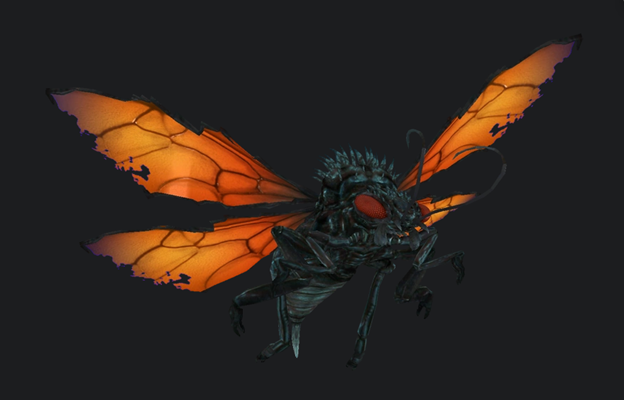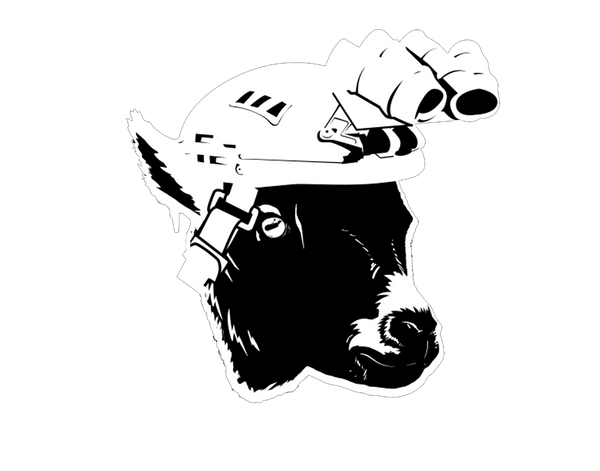
The Cazadores of the Fallout Universe: A Lore Deep Dive
Share
Introduction
In the irradiated wastelands of the Fallout universe, few creatures strike fear into the hearts of wanderers like the Cazador. These oversized, venomous wasp-like monstrosities are a testament to the horrors of pre-war scientific hubris and the unpredictable mutations of the post-apocalyptic world. From their origins to their role in the Mojave Wasteland, this article explores the lore behind the Cazadores, their creation, behavior, and impact on the Fallout universe, with a particular focus on their prominence in Fallout: New Vegas
Origins: A Product of Pre-War Experimentation
The Cazadores are not a natural evolution of the wasteland's ecosystem but a grotesque byproduct of pre-war genetic engineering. Their origins trace back to the Big MT (Big Mountain) research facility, a hub of unethical and cutting-edge scientific experimentation featured in the Fallout: New Vegas DLC Old World Blues. Within the sprawling laboratories of Big MT, scientists pushed the boundaries of genetic manipulation, creating a host of bizarre and deadly creatures. The Cazadores were one such creation, born from experiments on tarantula hawk wasps, a species known for their paralyzing sting and predatory behavior.
The scientists at Big MT, particularly those under the direction of the Think Tank—a group of disembodied brains obsessed with advancing science—spliced the DNA of tarantula hawks with other genetic material, likely to enhance their size, aggression, and resilience. The result was a creature far larger than its progenitor, with a wingspan rivaling a human's arm length and a venomous sting capable of killing even the hardiest wasteland survivors. The Cazadores' vibrant orange and black coloration, while striking, serves as a warning to potential threats—a trait inherited from their wasp ancestors but amplified to nightmarish proportions.
Like many of Big MT’s experiments, the Cazadores were not meant to escape into the wild. However, the chaos of the Great War and the subsequent collapse of containment protocols allowed these creatures to break free from their sterile laboratories. Once loose, they bred rapidly, spreading across the Mojave Wasteland and beyond, becoming a pervasive threat by the time of Fallout: New Vegas.

Biology and Behavior
Cazadores are a horrific blend of insectoid traits and bioengineered enhancements. Standing at roughly the size of a large dog, they possess powerful wings that allow for rapid, agile flight, making them difficult to outrun or outmaneuver. Their exoskeletons are tough enough to withstand small-arms fire, and their mandibles can deliver crushing bites. However, it’s their venomous stinger that makes them truly deadly. A single sting can incapacitate prey, delivering a neurotoxin that causes intense pain, paralysis, and, in many cases, death within minutes if untreated.
In the wild, Cazadores are fiercely territorial and operate in swarms, often nesting in caves, abandoned buildings, or rocky outcrops. Their aggressive nature means they will attack anything that encroaches on their territory, regardless of size or strength. This makes encounters with Cazadores particularly dangerous, as a lone wanderer can quickly find themselves overwhelmed by a swarm of these relentless predators. Their pack mentality and relentless pursuit have earned them a reputation as one of the Mojave’s deadliest inhabitants, rivaling even Deathclaws in their capacity for destruction.
Interestingly, Cazadores exhibit a degree of sexual dimorphism, with females being larger and more aggressive than males. This mirrors the behavior of their tarantula hawk ancestors, where females are the primary hunters. In the game, this is reflected in the larger “Cazador Queen” variants, which are even more formidable than their standard counterparts.
Role in the Mojave Wastelan
By the time of Fallout: New Vegas, set in 2281, Cazadores have become a scourge across the Mojave Wasteland. Their rapid reproduction and adaptability have allowed them to establish nests in diverse environments, from the rocky cliffs of Red Rock Canyon to the desolate stretches of the Ivanpah Dry Lake. Travelers, caravans, and even seasoned mercenaries tread carefully in areas known to harbor Cazador nests, as an encounter with these creatures often ends in disaster.

The presence of Cazadores has a tangible impact on the factions and communities of the Mojave. The New California Republic (NCR) and Caesar’s Legion, the two major powers vying for control of the region, both suffer losses to Cazador attacks, particularly in remote outposts or along trade routes. Smaller settlements, like Goodsprings or Primm, live in constant fear of Cazador swarms migrating too close to their borders. The creatures’ indiscriminate aggression makes them a shared enemy, though no faction has the resources or inclination to launch a concerted effort to eradicate them.
In Old World Blues, players learn more about the Cazadores’ origins and the role of Big MT in their proliferation. The DLC reveals that the facility’s scientists, particularly Dr. Borous, were responsible for their creation. Borous, a mad scientist with a penchant for experimenting on animals, expresses pride in the Cazadores’ lethality, viewing them as a triumph of genetic engineering. However, he remains oblivious to the chaos they’ve wrought in the outside world, a testament to the Think Tank’s detachment from the consequences of their actions.
Cultural Impact and Survivor Tales
Within the Fallout universe, Cazadores have become the stuff of nightmares, their reputation growing through whispered tales among wastelanders. Survivors who’ve faced them and lived to tell the tale speak of their speed, ferocity, and the agonizing sting that lingers long after the fight is over. In-game dialogue and notes, such as those found in the journals of unlucky prospectors, paint a vivid picture of the terror these creatures inspire. For example, a note found near a Cazador nest might describe a caravan’s desperate last stand, with the writer lamenting their failure to heed warnings about the “devil wasps.”
The Cazadores’ prominence in Fallout: New Vegas has also made them a fan-favorite (or fan-dreaded) element of the series. Their challenging combat encounters, which often require careful preparation and liberal use of antivenom, have cemented their status as one of the game’s most memorable adversaries. Players frequently share stories of harrowing escapes or hard-fought victories against Cazador swarms, contributing to the creatures’ enduring legacy in Fallout lore.

Symbolism: A Warning Against Hubris
From a thematic perspective, the Cazadores embody one of Fallout’s core motifs: the dangers of unchecked scientific ambition. Like the Super Mutants, Deathclaws, and other abominations born from pre-war experimentation, the Cazadores are a reminder of humanity’s tendency to meddle with forces it doesn’t fully understand. The scientists at Big MT created them not out of necessity but out of a desire to push the boundaries of what was possible, heedless of the potential consequences. Their escape into the Mojave serves as a cautionary tale, illustrating how the sins of the old world continue to haunt the new.
Moreover, the Cazadores’ relentless aggression and indiscriminate hostility reflect the harsh, unforgiving nature of the wasteland itself. They are a force of nature, untamed and uncontrollable, challenging the notion that humanity can ever fully dominate the post-apocalyptic world.

Conclusion
The Cazadores are more than just a deadly enemy in Fallout: New Vegas—they are a chilling piece of the franchise’s lore, embodying the fallout of pre-war arrogance and the unpredictable dangers of the wasteland. Born from the twisted minds at Big MT, these bioengineered horrors have carved out a fearsome niche in the Mojave, their presence shaping the lives of survivors and the strategies of factions. For players and lore enthusiasts alike, the Cazadores serve as a stark reminder of the Fallout universe’s central truth: in the wasteland, survival comes at a steep price, and even the smallest misstep can lead to a swift and painful end.
So, the next time you hear the telltale buzz of wings in the Mojave, ready your weapon, stock up on antivenom, and pray you’re faster than the swarm. The Cazadores are watching, and they’re always hungry. Better go get some RÈBÈLs RÄIDÈRs gear about it. Might just save your life.
By Nick Middaugh/nmiddaugh018
Photo credit: Fallout Wiki

2 comments
Cazadores, the perfect embodiment of just because you can, doesn’t mean you should.
I’ll never forget the panic of running into a swarm of these damned things when I was on my way to do a random side quest. Absolutely wrecked the vibe